
In the River TAKAHARA --Vol.75--
Peacock Queen
Peacock Queen was completed in 1984, the same year of Great Sedge, although it cost me more than 5 years of trial and error. My first aim of devising this fly was to fish rainbow trout and brown trout in the River Oshino and the River Katsura down Oshino and also to fish yamame trout in the River Kinugawa, my new river at that time.
The final version of Peacock Sedge. This fly performed well from an early pattern in the River Kinugawa and the River Katsura.
Both rivers had a large number of sedges and Muddler Sedge, the killer fly, performed very well at first. But as I kept fishing, Muddler Sedge, once called a miracle fly, gradually got poor response from fish.
Several years earlier, the same thing had happened to Muddler Minnow, once called an almighty fly. Actually, this fly had taken a leading part in my fishing in Lake Kamloops in Canada in 1980. (see vol.31-33)
I believed that I needed no fly but Muddler Minnow as far as the river had a lot of sedge. But later I felt that the fly suddenly came to be mocked by fish. Then I devised Muddler Sedge and thought that I had an advantage over fish again.

On a rainy day fish responded well to the wet fly.
Even if a fly comes to perform poorly, it usually survives as a killer fly in other rivers or in next year. That was why I used Muddler Minnow from the beginning of the season as far as it was effective and changed it into Muddler Sedge at the last moment. Imagine how I was embarrassed when Muddler Sedge, my last resort, lost its power just after the first half of the season.
Clearly its poor performance came from too much use of it. Therefore it was the best way to devise a new fly but I knew that it would still keep the image of adult sedge as far as I stuck to the same idea. Sooner or later, I would need another new fly. Endless game between a new fly and the fish. I should get a different idea for a new fly. It was how I made the first pattern (or the first trial) of Peacock Queen.
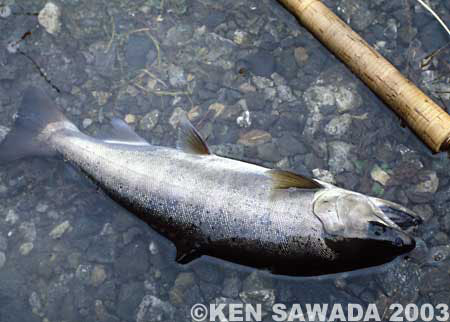
Rich bait made the fish fat at the upper reaches even in spring.
Peacock Sedge
Both Muddler Minnow and Muddler Sedge were modelled on adult sedges that flew just above the surface and swam on the surface. Once anglers saw the fish splash and attack the sedge that was swimming on the calm surface and making ripples, they were eager to experience such a thrill, using their own fly. However, the fish that made rises in the evening caught the most sedges of their meal under the water. Only a small number of sedges were caught when they made rise to the surface. In addition, most of sedges caught in the water were not adult but pupa.Now my new fly should be based on an image of pupa. Furthermore, the new fly should not float on the surface. A wet fly would be desirable. I wanted it to only touch on the surface or swim just under the surface. That was the starting point of my long way to Peacock Queen.
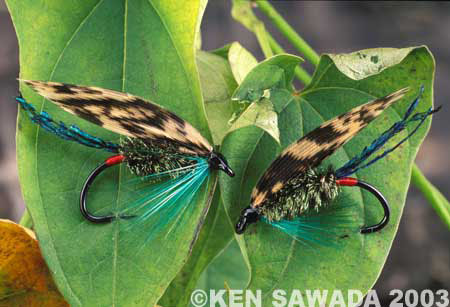
Peacock-and-Green. It played a leading part as a daytime fly.
In those days I was attracted by the pattern of peacock wing, my new material. I tried to dress several new flies. The most successful one was a wet fly just called Peacock Sedge. It was slightly different from today’s pattern but had the same layout of a short tail, a body made of quill and wings made of peacock.
Depending on this pattern of Peacock Sedge, I developed the image of pupa. I completed 3 patterns of Peacock Queen, Peacock King and Peacock-and-Green. Later Peacock Queen became the most famous for catching many big fish. It was the last one I completed.

An amago trout which grew up quickly. It loved Peacock-and-Green very much.
Those trial patterns in my early days made a great success in the River Oshino and the River Kinugawa, which was very significant to me. During and after evening rise, fish often seemed to pay special attention to the fly drifting just under the surface. Fish made ill response to highly-floating Muddler Sedge or ordinary sinking wet fly, either. I had long felt so and now I had no doubt about my guess.
The trial pattern introduced in the story of Vol.17 in 1982 was as follows, although it was changed soon after that story. Its tale and hackles were made of hen pheasant flank feathers, its body was made of peacock herl and its wings were, of course, made of peacock. Red floss was used for its tag. It was just the combination of today’s Peacock Queen and Peacock-and-Green.

A half-hibernating yamame trout
A Diverging Point of 2 Flies
I used that trial pattern to catch yamame trout in the River Katsura and the River Kinugawa. I perfectly relied on its great performance. I never hesitated to use it for my first fishing in the River Takahara. Then I got great satisfaction from the results. But there were several problems. One was that every time I caught a fish the tag floss was cut off. It looked as if a red piece of dust was attached on the hook. As I expected this fly to catch big tough fish at evening rise, I had to improve it so that it might not be damaged after every catch.Another problem was that after every catch its tail side sagged and it could not keep good posture. In the evening we often have to fish in almost stagnant streams, unlike the daytime. In addition, it is difficult to see the fly drifting at dusk. I wanted to use more water-resistant material for the tail so that I might not worry about the fly posture. I also wanted to change tag material into more endurable one.

The body colour became dark after the fish lived long among a lot of black stones.
Then I put several peacock sword herls to the fly tail and used silver tinsel for the tag. Both changes were quite successful. Now only one problem remained how to improve the body, where peacock herl was sometimes broken. A little later in 1984 I changed peacock herl into olive salmo web. As for the rib I tied silver oval tinsel around the body because pupa came up to the surface with silver bubbles. That was how today’s pattern of Peacock Queen was completed.
My old idea of using red floss for the tag and peacock herl for the body was transferred from Peacock Queen to Peacock-and-Green. Peacock-and-Green, as its name suggests, had green cock hackles, which were much thinner and less water-resistant than those of hen pheasant of Peacock Queen or cock pheasant of Peacock King. I took advantage of those characteristics and made the fly into smaller sizes of 8 and 10. Later Peacock-and-Green became very popular as a daytime fly.

A yamame trout caught Jock in a sunny spot. In the daytime smaller flies were effective.
Peacock-and-Green
One day in the end of March, 1986, it had been rainy since the morning in the River Takahara. Due to warm winter there was almost no snow on the bank. But it was cold in the rainy day. Rain did not seem to stop soon but to change into snow in the evening. Cold rain chilled the water, different from snowfall from start to finish.Immediately after lunch, I headed for the river, half giving up evening fishing. 2 anglers who wanted to see wet fly fishing waited at Hohzansoh. I went upstream with them. My destination was down Chubu Technical College.
I thought that snow melting water flowed into the river due to rainfall from the morning. Probably the Ashiarai valley increased and made the water at the lower reaches of Karukaya muddy. Usually the water at the upper reaches of the junction of the Ashiarai valley is too clear but now it might be desirable.

We arrived at the junction and found that my guess was right. Choosing size 6 Alexandra as a dropper and size 8 Peacock-and-Green as a lead fly, I walked down the river.
The water was not muddy at the upper reaches but the rain made me feel as if it were evening. The bank near the junction was crowded with a lot of big rocks and many lines of water flowed between the rocks. Only 2 or 3 minutes later when I made the lead fly flow into the head of the small pool like a cave, which lay deep in a steep-sloping rock, I got a bite with a thud. I felt like the fly was drawn into the hole. Immediately I set the hook to the fish a brown lump jumped from the surface. It swam downstream at top speed and ran into a large pool 15 m downstream.
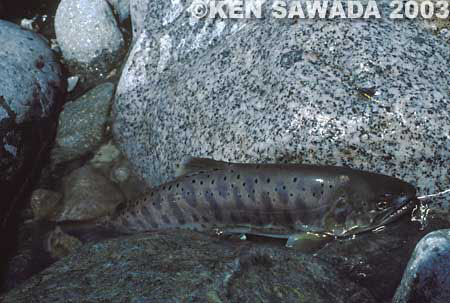
As I was sure that the fish would not run farther downstream, I raised the rod high to prevent the line from being caught between the rocks and moved slowly downstream. While I stepped along the rocks which appeared on the surface and stood in front of the pool, the fish still ran around under the white bubbles at top speed. Then it gave up moving down but broke the surface probably because there was no hiding place. It was a nice-shaped male yamame trout of 32 cm. It looked reddish-brown because it had long hidden behind the rocks. Peacock-and-Green was stuck in the edge of its widely-opened mouth.
After a little pause I watched downstream. There was a line of a narrow stream on the right bank. Usually the water just wetted stones there but now the water was flowing a little. The water was clear there, whereas the mainstream included muddy water from the Ashiarai valley. Unexpectedly such a small creek gives us some fish at such a moment. I fished downstream. The most area of the creek was less than 20 cm deep. I held the rod tip upwards and made the fly slide on the surface. When I fished the tiny pool of a car size, a fish attacked my fly from behind the side rock with its dorsal fin stuck into the surface. It was a wild-gone rainbow trout, a rare fish in those days.
-- To be continued --
- NET SHOP INFORMATION

SL6 Black Spey Hooks
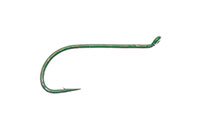
DU3 Limerick Spinner Hooks
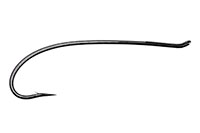
SL4 Single Bartleet Hooks
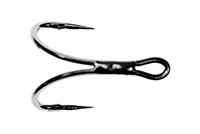
XD1 Tube Fly Double Hooks

DD2 Flat Perfect Hooks
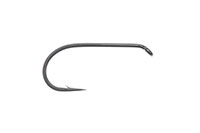
DD1 Black Terrestrial Hooks
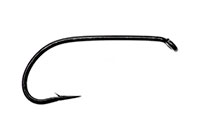
TD4 Old Limerick Wet Hooks

DU1 Silver May Hooks

MU1 Flat Midge Hooks

LD3 Long Limerick Hooks

TD2 Summer Sproat Hooks
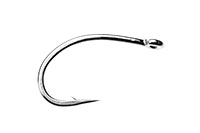
XS1 Tube Single Silver Hooks

TD6 Siver Sedge Hooks

SL5 Black Spey Hooks

DU3 Limerick Spinner Hooks
- TROPHY CLUB
- FLY SHOW
- EXHIBITION
- MASTERS`
- FLY DRESSING CONTEST Archives
- TRAVELLER Archives
- TACKLE IMPRESSIONS Archives
- ANGLERS` PHOTO GALLERY Archives
- ----------------------------------------------
- トロフィークラブ
- フライショー
- エキシビション
- マスターズ
- フライドレッシング・コンテスト・アーカイヴ
- トラヴェラー・アーカイヴ
- タックル・インプレッション・アーカイヴ
- アングラーズ・フォトギャラリー・アーカイヴ
株式会社サワダ 185-0021 東京都国分寺市南町3-13-4
SAWADA'S INC. 3-13-4 Minamicho, Kokubunji, Tokyo 185-0021, Japan
写真・ドキュメントの無断転載を禁じます。
All the images and documents found on this site are owned by Ken Sawada and may not be used without permission.
But, link to this site is FREE.
Copyright © 2000 - 2025 SAWADA'S INC.. All rights reserved.
SAWADA'S INC. 3-13-4 Minamicho, Kokubunji, Tokyo 185-0021, Japan
写真・ドキュメントの無断転載を禁じます。
All the images and documents found on this site are owned by Ken Sawada and may not be used without permission.
But, link to this site is FREE.
Copyright © 2000 - 2025 SAWADA'S INC.. All rights reserved.
